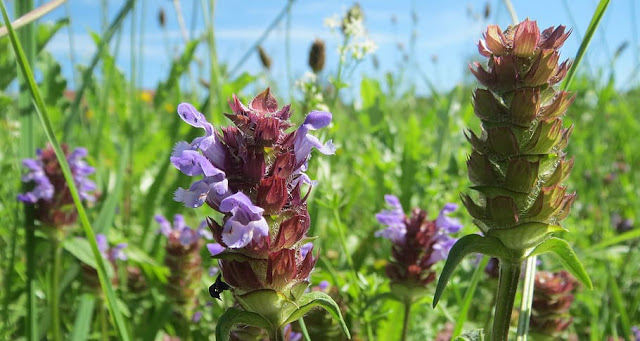This past week the last of the gooseberries have been picked (a bit later than usual, the weather has been so unhelpful this year) and now it's time to reshape the plants with a summer pruning.
This was supposed to be done in early July but I'm banking on everything being a bit late this year. And, flushed with the success of squeezing two more gooseberry plants into my overstuffed garden, I want to make sure they're trained properly.
In my gardens I have four red gooseberry bushes - one bush, two fans and one in a pot that's been ambushed by sawfly again this year.
Gooseberries were never my favourite fruit; at school I couldn't stand the stewed (green) gooseberries served up under soggy pastry as pudding. Not any more though - these days I happily eat beautiful ripe Hinnonmaki Red gooseberries straight from the bush ... the jury is still out on the green ones though!
Having seen gooseberry bushes pruned into an open bowl shape during my garden design studies, I followed suit for my first gooseberry bush. It enjoyed its spot in my veg patch but, confession time, I didn't prune regularly so it grew large and tangled albeit with abundant berries. So now I'll prune this week to start reshaping it and again at the usual time in winter while it's dormant.
I acquired a second tiny plant, and then a third and, finally, a fourth. Where to put them all? They languished happily in 5 litre pots for a good while. As ever, my impulse to buy plants had got the better of me.
A good idea
And then I rescued lengths of slim bendy plastic pipe from a builder's skip. These were destined to be arches to support the fleece over my veg but it occurred to me that I could use them to train my gooseberry bushes into freestanding fans. (Fans are usually grown against a wall or fence.) The plants were moved from their pots and they're now in the car park garden, growing in semi-shade, regularly watered and fruiting prolifically thanks to the beautiful soil there. The fruit is more visible, the thorns less threatening (more easily seen and thus avoided!).
But in doing so, I had to learn to prune correctly... with sturdy leather gloves on!
Pruning ... aka shaping the beasts!
Gooseberries fruit on old wood; to grow in a fan shape any stems growing out, rather than up, should be pruned back to the framework - which in this case are the five tall stems tied in to the arch. Gooseberries growing in an open bowl shape should have inward growing branches and any branches trailing on the ground removed, all being taken back to an outward growing bud and the main stem at ground level left clear of any growth - cut off stems below 10-15 cm. (Imagine a goblet shape glass on a very short stem.)
Gooseberry bushes have vicious spiky thorns so keeping the centre open, or space between the fanned out branches, helps with easier access to the fruit in summer. And good airflow helps to prevent mildew.
How I planted my fan gooseberries
Having planted the 'bushes' and pushed the hoops deeply into the soil 2 feet (60cm) apart, I tied the long upright stems in a fan shape and pruned the rest back to two buds. This would have been quite traumatic for the plant so, after pruning, they were watered and mulched around (not up to) the base.
How to get bigger berries
In early summer when the fruits have appeared it's time to direct the plant's energy into quality rather than quantity. So, as with thinning out top fruit (apples, etc) to get bigger fruit, the same is true of gooseberries. Reduce the number of berries as they start to ripen so that the plant concentrates on developing those that remain. The underripe berries needn't be wasted as, although still hard and quite tart, they can be used for savoury sauces, mixed berry jams (usefully high in pectin!) and chutneys. It's not essential to do this but if you want bigger gooseberries, take two pickings a month or so apart.
 |
| Here's some I grew earlier ... |
And what of Hinnonmaki #4?
The fate of this plant is undecided. Growing in a large pot, its leaves have been eaten two summers running by sawfly and now a Cape Gooseberry aka Inca Berry, Ground Cherry or Physalis peruviana is taking over the pot. I have no idea where this interloper came from but I like it!
And, by the way, despite the similarity of nomenclature, Cape Gooseberries are related to tomatoes, peppers and potatoes (the Solanaceae family) and not ordinary gooseberries which fall into the Ribes (ie currant) family. So now you know.




